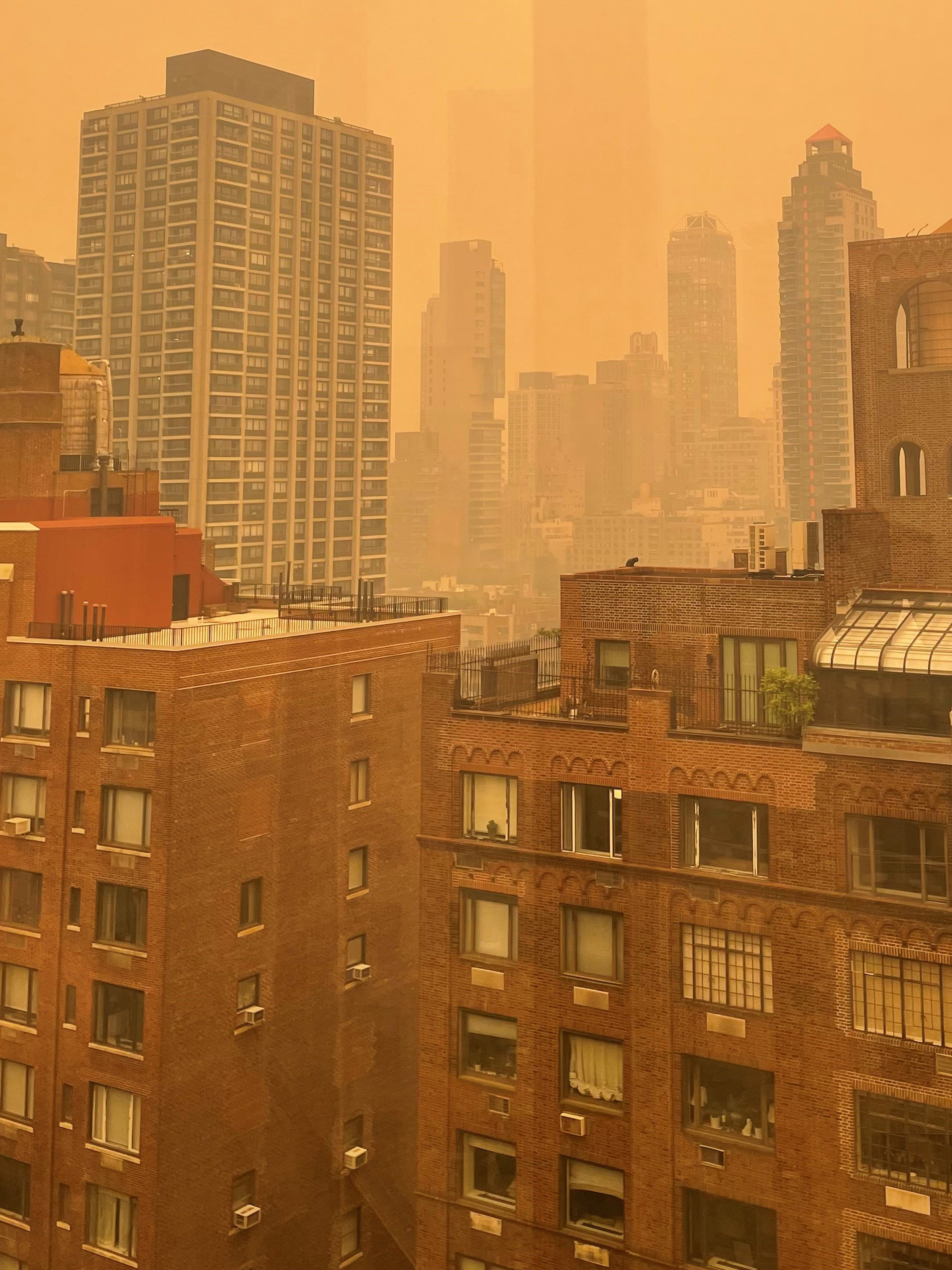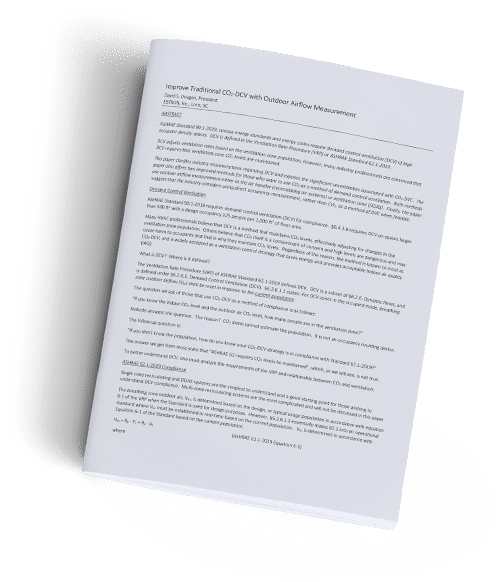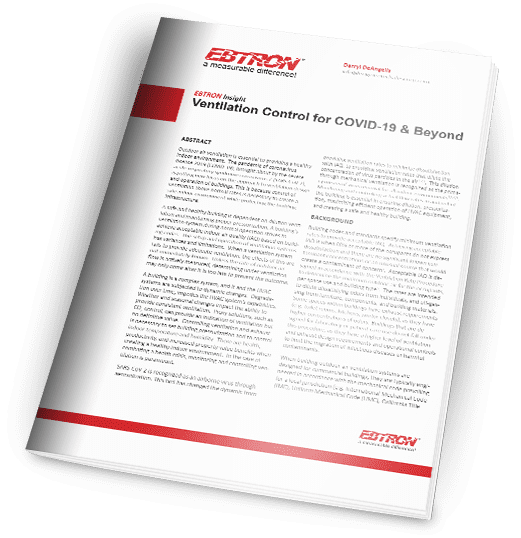Making Buildings Healthy
The aftermath of the COVID-19 pandemic is an ongoing challenge for establishments to maintain high indoor air quality (IAQ) standards for occupants. The ASHRAE Epidemic Task Force (ETF) has guided ventilation and air filtration systems and protocols during the early stage of the pandemic. With the release of ASHRAE Standard 241, Control of Infectious Aerosols, a new and improved approach to creating infection-resilient buildings has been established. This new guidance can assist designers, facility managers, engineers, and building owners in making informed decisions regarding future IAQ protocols in new and existing buildings.
Download: Making Buildings Healthy
Wildfires have Increased Advocacy for Better Indoor Air Quality and Building Codes
In recent years, a record number of wildfires in Canada and the Western United States has sparked a renewed discussion about indoor air quality (IAQ). Building codes and ASHRAE’s Ventilation and IAQ Standards (62.1, 62.2) basis for achieving IAQ is through dilution (ventilation) and air cleaning (filtration) as well as ensuring air that enters or leaves a building in a controlled and intended manner (pressurization control). These things are essential to maintaining indoor contaminant levels generated by people, building materials, and components below thresholds. In some instances, the contaminants outdoors may be higher than indoors, universally measured by the air quality index (AQI) 1, and sometimes differs by country.2 Wildfires generate gases and particulate matter that the AQI measures; it is a good indicator to determine when the outdoor air is at risk. These contaminants can be filtered out. The amount of removal depends on the efficacy of the filters used.
Download: Wildfires have Increased Advocacy for Better Indoor Air Quality and Building Codes
The Importance of Airflow Measurement
Outdoor air is essential to dilute airborne contaminants. The COVID-19 pandemic demonstrated that inadequate outdoor air ventilation increased transmission between occupants. Under-ventilation of outdoor air also affects building pressure, increasing moisture levels in the building envelope and ventilation zone. Excessive moisture is a prerequisite to mold and fungal growth and contributes to poor IAQ and thermal comfort. Mechanical codes, including the IMC and UMC, and energy codes, including the IgCC and California’s Title 24, specify outdoor air ventilation rates for compliance. However, most buildings are deficient in code-required ventilation during operation.
Download: The Importance of Airflow Measurement
Improve Traditional CO2-DCV with Outdoor Airflow Measurement
Abstract: ASHRAE Standard 90.1-2019, various energy standards and energy codes require demand control ventilation (DCV) of high occupant density spaces. DCV is defined in the Ventilation Rate Procedure (VRP) or ASHRAE Standard 62.1-2019.
DCV adjusts ventilation rates based on the ventilation zone population, however, many industry professionals are convinced that DCV requires that ventilation zone CO2 levels are maintained.
This paper clarifies industry misconceptions regarding DCV and exposes the significant uncertainties associated with CO2-DVC. The paper also offers two improved methods for those who want to use CO2 as a method of demand control ventilation. Both methods use outdoor airflow measurement either at the air handler (recirculating air systems) or ventilation zone (DOAS). Finally, the paper suggests that the industry considers using direct occupancy measurement, rather than CO2, as a method of DVC when feasible.
Download: Improved CO2-DCV
The Importance of Controlled Ventilation in Schools
Abstract: Outdoor Air Ventilation in schools promotes health and wellbeing. Each individual requires a set amount of ventilation. The means to achieve ventilation is typically through mechanical HVAC systems. The minimum amount of ventilation required for schools is determined by state, provincial, and municipal codes. Many studies have determined that increased ventilation beyond the minimum may promote better health and improved performance. However, there is a cost to ventilation as it requires that the air be conditioned and filtered for the indoor environment. Therefore, efforts are made to reduce ventilation when the population in the building is reduced and when the building is unoccupied. Furthermore, the ventilation rate is impacted by the environment internal and external to the building, and by degradation and changes in the operation of the HVAC systems. The result is, the amount of actual ventilation is always subjected to dynamic changes and thereby a method to measure and control the ventilation should be integrated into every system to provide the desired correct and efficient ventilation rate.
Download: The Importance of Controlled Ventilation in Schools
Ventilation Control for COVID-19 & Beyond
Abstract: Outdoor air ventilation is essential to providing a healthy indoor environment. The pandemic of coronavirus disease 2019 (COVID-19), brought about by the severe acute respiratory syndrome coronavirus 2 (SARS-CoV-2), is putting new focus on the approach to ventilation design and operation of buildings. This is because control of ventilation above normal rates is necessary to create a safe indoor environment while protecting the building infrastructure.
A safe and healthy building is dependent on dilution ventilation and maintaining proper pressurization. A building’s ventilation system during normal operation strives to achieve acceptable indoor air quality (IAQ) based on building codes. The setup and operation of ventilation systems has variances and limitations. When a ventilation system fails to provide adequate ventilation, the effects of this are not immediately known. Unless the rate of outdoor airflow is actively measured, determining under-ventilation may only come after it is too late to prevent the outcome.







